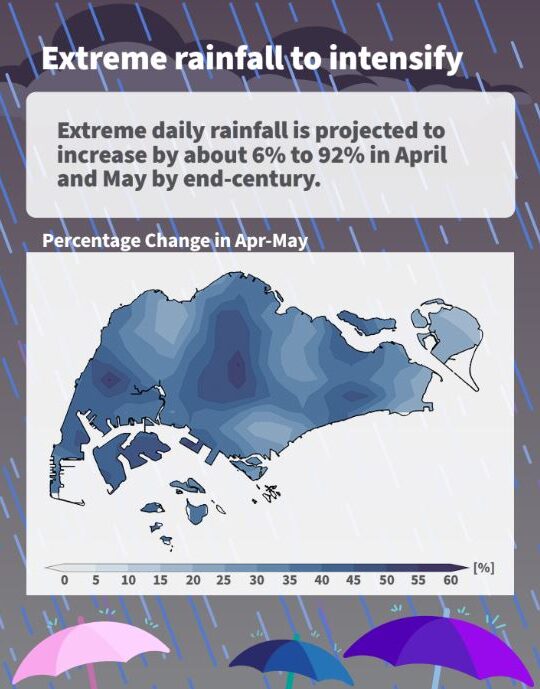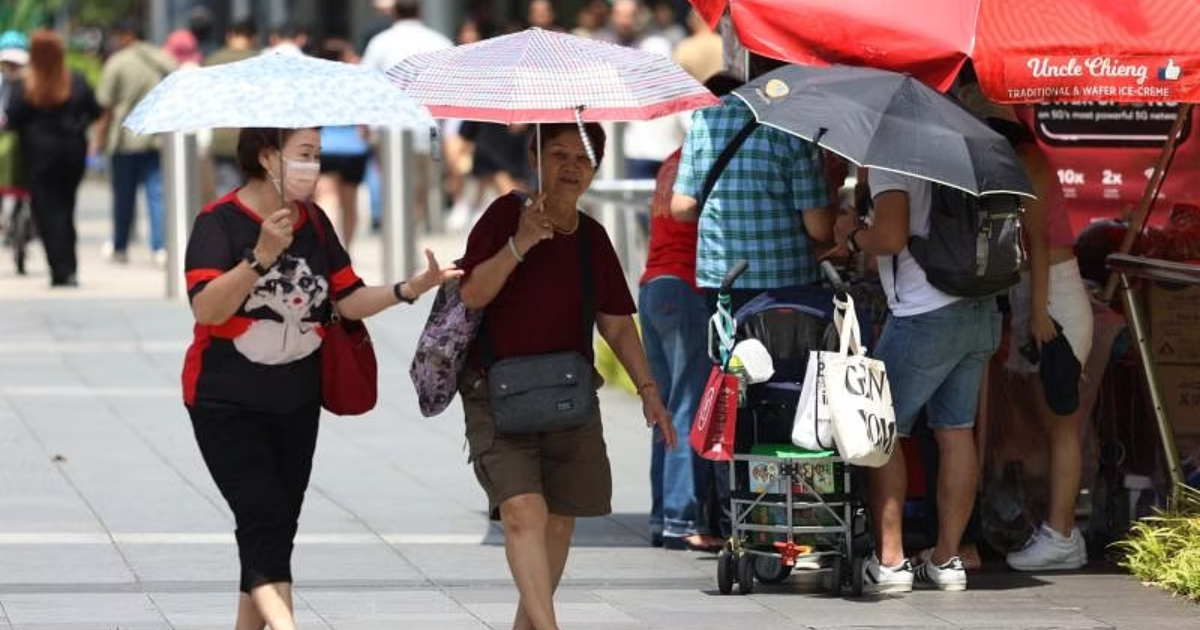Singapore’s Climate Forecast for 2100: Major Changes Ahead
When it comes to climate change, we are constantly in a race against time.
Back in 2021, the United Nations dubbed the year as the “year of action” for tackling climate change before it becomes too late.
However, the sad reality is that certain impacts of climate change may not be fully comprehended until they are directly experienced.
To bring these impacts closer to home, the Third National Climate Change Study (V3) in Singapore provides insightful revelations.
On 5 Jan, The Centre for Climate Research Singapore (CCRS), functioning under the Meteorological Service Singapore, unveiled the findings from the Third National Climate Change Study.
These findings align with those of the Intergovernmental Panel on Climate Change (IPCC) 6th Assessment Report (AR6).
The IPCC was established by the United Nations Environment Programme (UNEP) and the World Meteorological Organization (WMO) back in 1988.
Let’s delve into the five key changes projected to occur in Singapore by the end of this century, based on current trends.
1. More “Very Hot Days”; Warm Nights Are The New Normal
Singapore is set to experience warmer conditions.
Annual mean temperatures are expected to rise between 0.6°C and 5°C by 2100.
Singapore’s annual mean temperatures have been increasing at a rate of 0.24°C per decade over the past 40 years.
This rate is projected to accelerate to 0.55°C per decade by the end of the century, assuming high emission levels continue.

The V3 study predicts that the annual average daily maximum temperature will soar to 36.7°C by the century’s end, a significant increase from the current average of 31.4°C.
Consequently, days with maximum temperatures exceeding 35°C will become much more common.
Over the last 40 years, Singapore averaged only 21.4 “very hot days” per year.
However, by the century’s end, this could skyrocket to an average of between 41 and 351 days per year.
But there’s more.
Currently, cooler temperatures at night offer some respite from the daytime heat.
By 2100, this relief will be rare, with more warm nights where temperatures exceed 26.3°C.
From an average of 76 such nights per year in the past 40 years, Singapore could face most nights in the year with these warm temperatures by the century’s end.
2. Rising Threat of Heat Stress
Heat stress occurs when the body struggles to cool itself and maintain a healthy temperature.
This condition arises when the body’s mechanisms for heat dissipation, primarily through sweating and radiating heat, are overwhelmed by extreme external temperatures, high humidity, or direct exposure to the sun.
By the century’s end, under a high emissions scenario, instances of high heat stress are anticipated to be significantly more frequent than moderate heat stress, reversing the current trend.
It is projected that high heat stress will be experienced almost year-round.

To measure this, the V3 study uses the Wet-Bulb Globe Temperature (WBGT), a composite measure accounting for air temperature, humidity, wind speed, and solar radiation.
Currently, the annual average daily mean WBGT stands at 26.6°C, which is already considerably high.
By 2100, it is projected to increase by up to 4.3°C, reaching 30.9°C.
3. Extreme Rainfalls to Intensify
Alongside rising temperatures come more extreme daily rainfalls.
Extreme daily rainfall is projected to increase by about 6% to 92% in April and May by the century’s end.

For the northeast monsoon wet season from November through January, the seasonal total rainfall is expected to occasionally exceed the historical high of 1507 mm, recorded in 2006.
Interestingly, these changes are anticipated across all seasons.
4. Dry Periods Get Drier
Dry spells in Singapore could become more frequent and last longer.

The Meteorological Service Singapore (MSS) defines a dry spell as a period of at least 15 consecutive days with daily total precipitation less than 1 mm.
By the end of the century, Singapore is expected to experience an average of one dry spell every 10 to 60 months.
Furthermore, total rainfall during the southwest monsoon dry season, from June through August, could occasionally fall significantly below the historical low of 314 mm, recorded in 1997.
Perhaps the most alarming of all, Singapore faces the increasing threat of being submerged under sea waters.
Literally.
The mean sea level around Singapore is projected to rise by 0.23m to 1.15m by the end of the century.
While not intended to alarm, it is crucial to note that V3 projections indicate that the sea level could rise by up to around 2m by 2150 under the high emissions scenario.

Most of Singapore lies no more than 15 metres above sea level.



